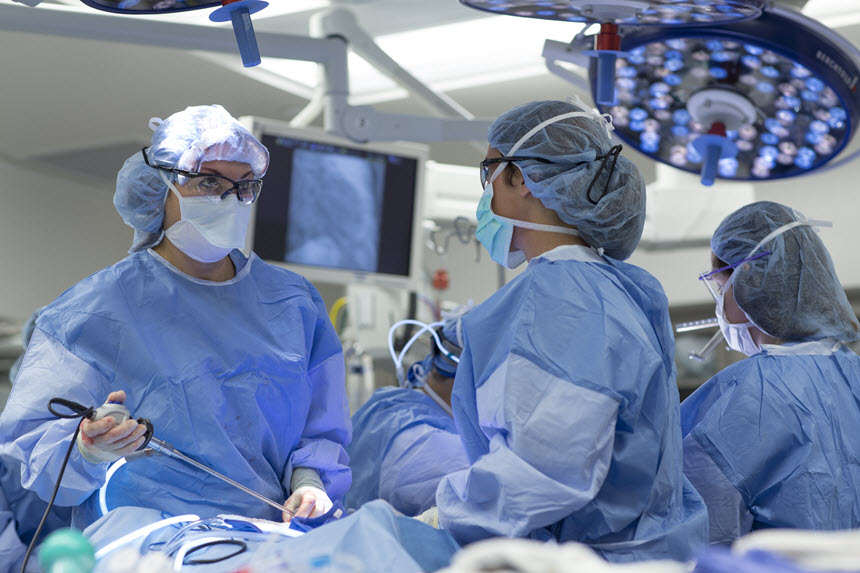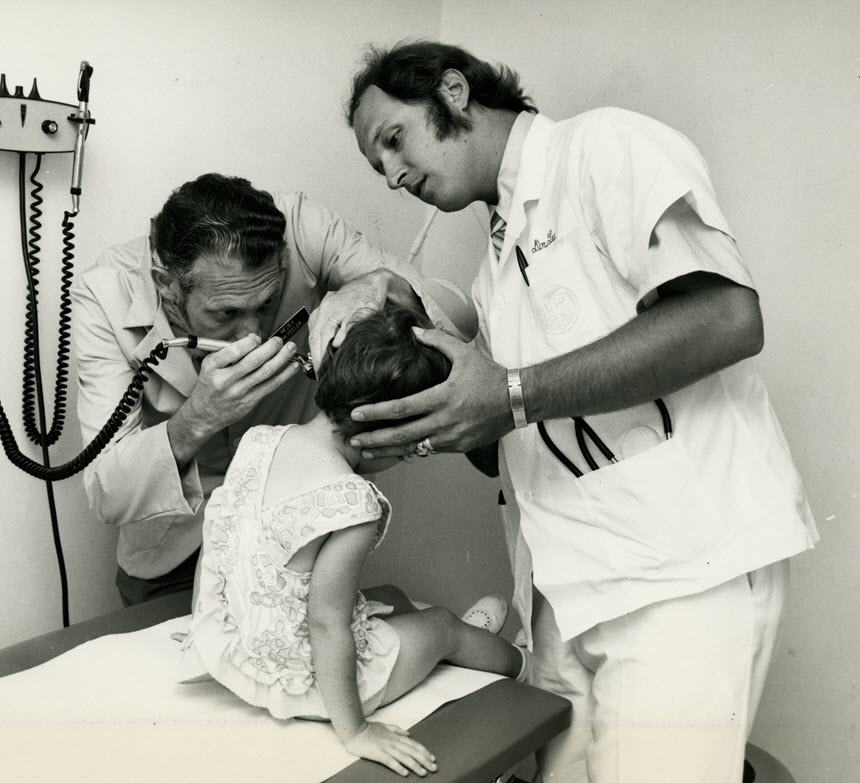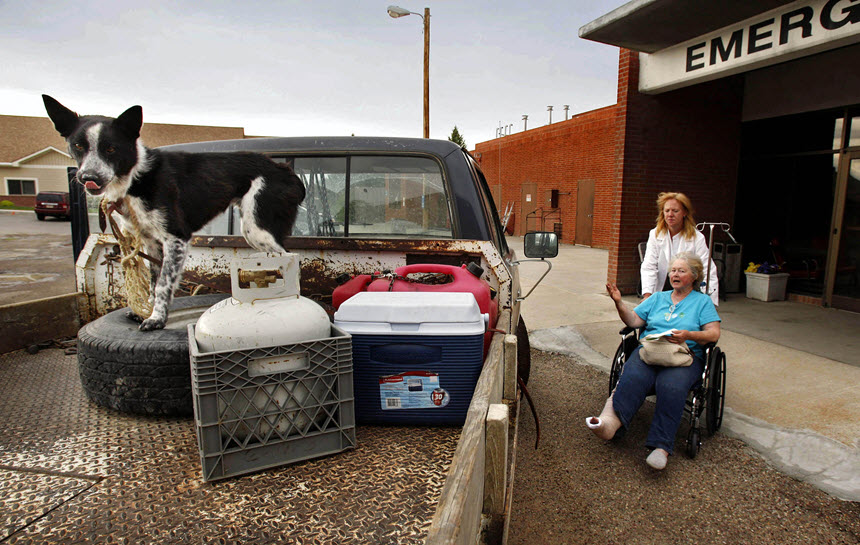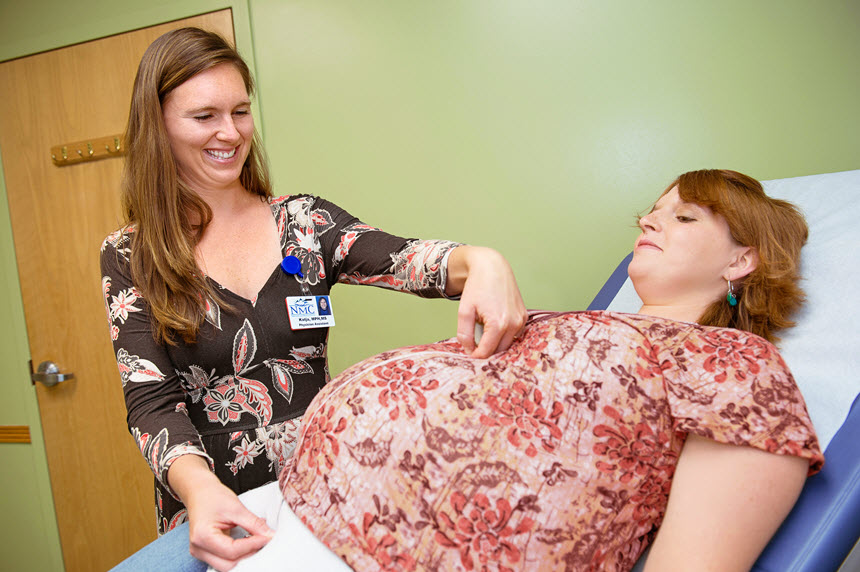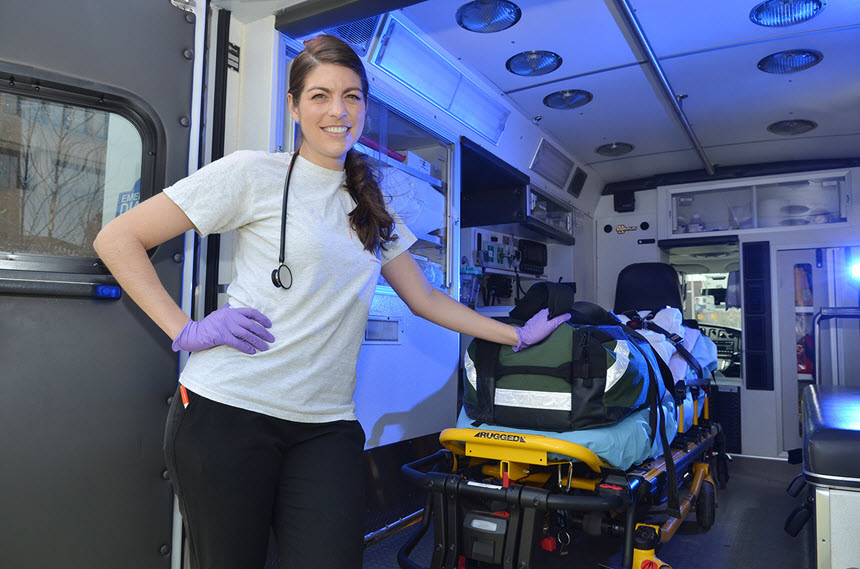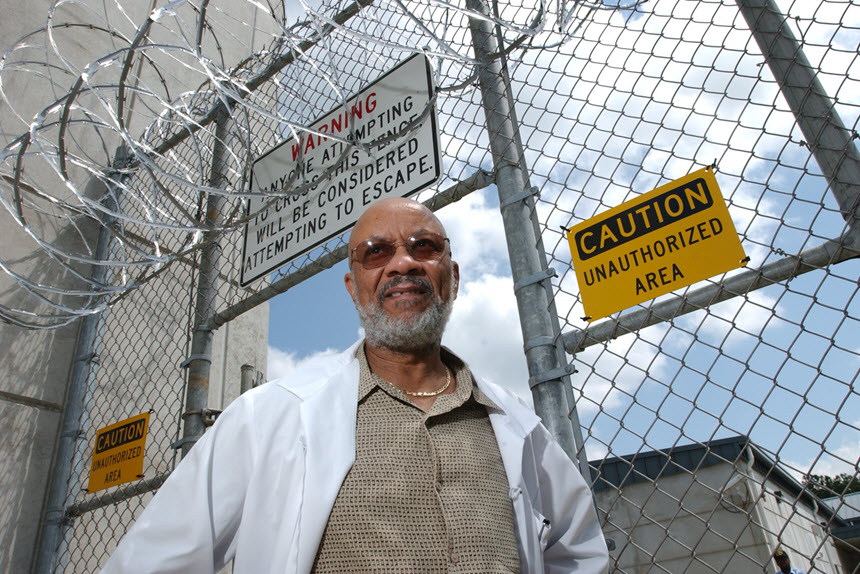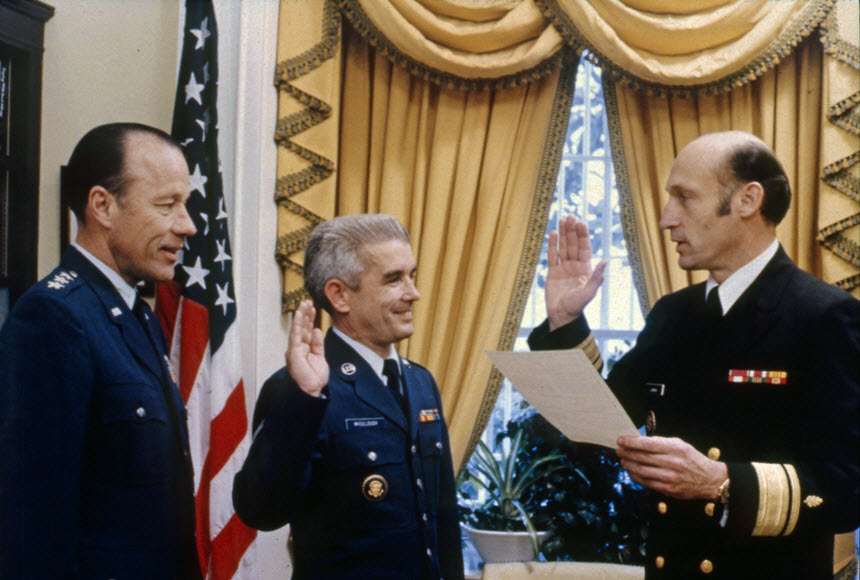Originally, PAs assisted physicians primarily in general practices. As the profession grew in the 1970s and 1980s, PAs began working with new groups in diverse locations, including the elderly in nursing homes, patients with HIV and AIDS in hospitals and clinics, and incarcerated people. Today, PAs also practice in emergency rooms, the military, and even at the White House.
By working in many different settings and specialties, PAs serve a wide variety of patients. PAs specialize in areas including internal medicine, surgery, and obstetrics and gynecology, to name a few. They are also able to change fields throughout their careers due to their generalist educations, clinical training, and certifications.
At the Cleveland Clinic, Raisa Polacek, PA-C (left) assists during an open heart surgery, Cleveland, OH, 2015
Courtesy Cleveland Clinic
Surgical PAs have many different specialties, such as cardiothoracic surgery (heart and lungs), orthopedic surgery (bones and muscles), and neurosurgery (brain and nerves). They assist in every aspect of surgery, from preparing patients for operations to performing routine procedures.
Former U.S. Navy corpsmen H. James Peeler, PA (left) examines a child’s ear with the supervision of Dr. Thad Lee (right), chief resident in family practice at the Medical University of South Carolina, Charleston, SC, ca. 1970s
Courtesy National Library of Medicine
When the U.S. government passed the Social Security Amendments of 1965, it created two new health care programs, Medicare and Medicaid. The country already faced a shortage of physicians, and the increase in patients with access to affordable health care furthered that need. The PA profession began by training PAs to assist in general practices to fill that gap.
Karyn Thornton, PA-C, who works in several general practices in rural Montana, wheels a patient out to a family member’s truck, Superior, MT, 2013
Courtesy Craig Schreiner-Wisconsin State Journal
Initially, the PA profession focused on serving people who did not have regular access to health care, particularly in rural areas without enough physicians. PAs helped physicians see more patients, and they worked with remote supervision. The profession’s tradition of caring for underserved groups continues today.
A specialist in obstetrics and gynecology at Northwestern Medical Center, Katja Von Sitas, PA-C examines a pregnant patient, St. Albans, VT, 2012
Courtesy Northwestern Medical Center in St. Albans, VT
PAs care for children before and after they are born by specializing in neonatology and pediatrics, in addition to obstetrics and gynecology.
Katie Bubnack, a PA student at SUNY Upstate Medical University, expands her training by volunteering as an emergency medical technician (EMT), Syracuse, NY, 2013
Courtesy William Mueller/SUNY Upstate Medical University
PAs’ specializations continue to expand. They currently work in areas ranging from emergency medicine to geriatrics to dermatology.
Earl Echard, PA-C serves in the Triangle Prison System in Raleigh, NC, 2004
Courtesy The Raleigh News & Observer
Echard began working for the North Carolina Department of Corrections in 1982. He has dedicated his career to serving inmates by establishing and improving health clinics in the state’s prison system.
In the Oval Office, the White House physician, Adm William Matthew Lukash (right), swears in George McCullough (center) as the first PA-C commissioned into the U.S. Air Force, while the Air Force Surgeon General, Gen George Shaffer (left), watches, Washington, DC, 1978
Courtesy Physician Assistant History Society
In 1977, McCullough became the first PA assigned to the White House medical staff. Shortly thereafter, he became the first PA commissioned by the U.S. Air Force and he helped its Surgeon General develop regulations for the new newly-commissioned military PAs.
At the Cleveland Clinic, Raisa Polacek, PA-C (left) assists during an open heart surgery, Cleveland, OH, 2015
Courtesy Cleveland Clinic
Surgical PAs have many different specialties, such as cardiothoracic surgery (heart and lungs), orthopedic surgery (bones and muscles), and neurosurgery (brain and nerves). They assist in every aspect of surgery, from preparing patients for operations to performing routine procedures.
Former U.S. Navy corpsmen H. James Peeler, PA (left) examines a child’s ear with the supervision of Dr. Thad Lee (right), chief resident in family practice at the Medical University of South Carolina, Charleston, SC, ca. 1970s
Courtesy National Library of Medicine
When the U.S. government passed the Social Security Amendments of 1965, it created two new health care programs, Medicare and Medicaid. The country already faced a shortage of physicians, and the increase in patients with access to affordable health care furthered that need. The PA profession began by training PAs to assist in general practices to fill that gap.
Karyn Thornton, PA-C, who works in several general practices in rural Montana, wheels a patient out to a family member’s truck, Superior, MT, 2013
Courtesy Craig Schreiner-Wisconsin State Journal
Initially, the PA profession focused on serving people who did not have regular access to health care, particularly in rural areas without enough physicians. PAs helped physicians see more patients, and they worked with remote supervision. The profession’s tradition of caring for underserved groups continues today.
A specialist in obstetrics and gynecology at Northwestern Medical Center, Katja Von Sitas, PA-C examines a pregnant patient, St. Albans, VT, 2012
Courtesy Northwestern Medical Center in St. Albans, VT
PAs care for children before and after they are born by specializing in neonatology and pediatrics, in addition to obstetrics and gynecology.
Katie Bubnack, a PA student at SUNY Upstate Medical University, expands her training by volunteering as an emergency medical technician (EMT), Syracuse, NY, 2013
Courtesy William Mueller/SUNY Upstate Medical University
PAs’ specializations continue to expand. They currently work in areas ranging from emergency medicine to geriatrics to dermatology.
Earl Echard, PA-C serves in the Triangle Prison System in Raleigh, NC, 2004
Courtesy The Raleigh News & Observer
Echard began working for the North Carolina Department of Corrections in 1982. He has dedicated his career to serving inmates by establishing and improving health clinics in the state’s prison system.
In the Oval Office, the White House physician, Adm William Matthew Lukash (right), swears in George McCullough (center) as the first PA-C commissioned into the U.S. Air Force, while the Air Force Surgeon General, Gen George Shaffer (left), watches, Washington, DC, 1978
Courtesy Physician Assistant History Society
In 1977, McCullough became the first PA assigned to the White House medical staff. Shortly thereafter, he became the first PA commissioned by the U.S. Air Force and he helped its Surgeon General develop regulations for the new newly-commissioned military PAs.
Originally, PAs assisted physicians primarily in general practices. As the profession grew in the 1970s and 1980s, PAs began working with new groups in diverse locations, including the elderly in nursing homes, patients with HIV and AIDS in hospitals and clinics, and incarcerated people. Today, PAs also practice in emergency rooms, the military, and even at the White House.
By working in many different settings and specialties, PAs serve a wide variety of patients. PAs specialize in areas including internal medicine, surgery, and obstetrics and gynecology, to name a few. They are also able to change fields throughout their careers due to their generalist educations, clinical training, and certifications.









